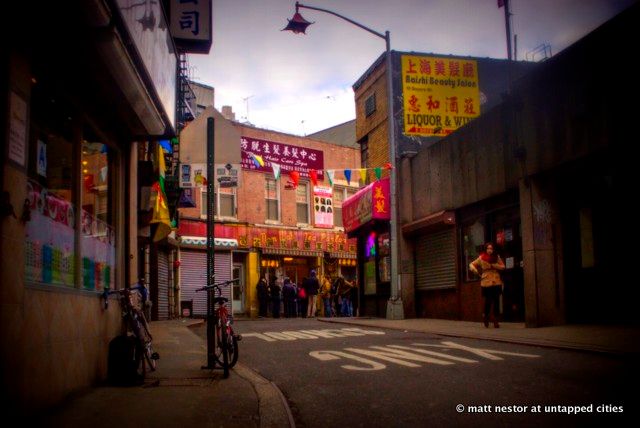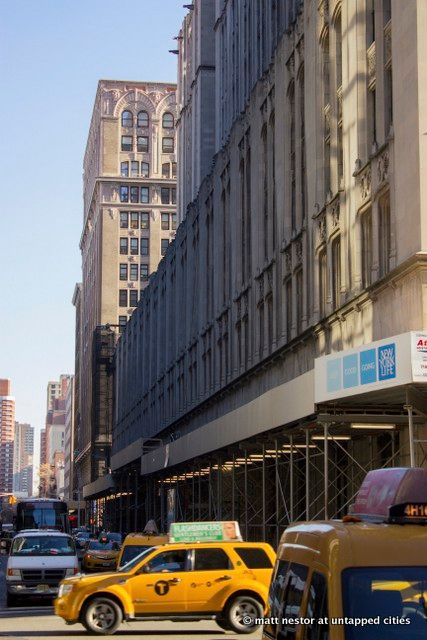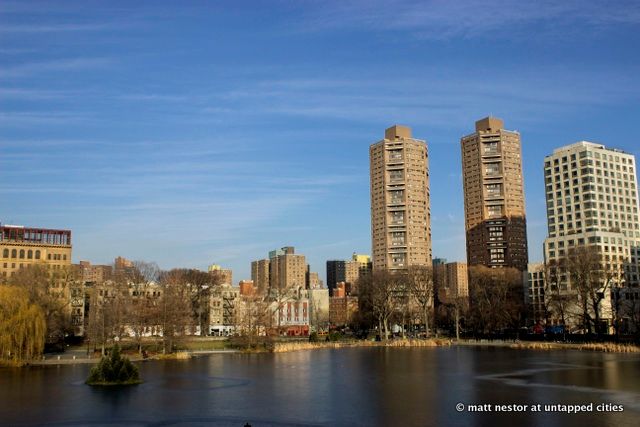Last-Minute NYC Holiday Gift Guide 🎁
We’ve created a holiday gift guide with presents for the intrepid New Yorker that should arrive just in time—


Last week we presented you with five beautiful New York murder scenes. This week, get ready for five more–and no, we’re still not including the Dakota.

Doyers Street is too big to be officially counted as an alley, but the narrow, meandering street in Chinatown is an intriguing urban escape path (especially aided by this tunnel) from the busy Bowery.
This modern Thermopylae is also the site of some of the most gruesome urban street battles in New York history. At the turn of the 20th century, the most powerful Tong, or gang, in Chinatown was the On Leong, under the control of Tom Lee. Among his rivals was the upstart Mock Duck, leader of the Hip Sing. Meeting Lee over tea one day, Duck demanded that he cede control of half of his gambling rackets to the Hip Sing. Lee refused and the war was on.
Doyers Street, which connected the two Tong territories, came to be known as the Bloody Angle. With guns and hatchets, gangsters repeatedly met here to slaughter each other. Over 50 fighters died here in one encounter alone. The war finally ended when Mock Duck wrested control of Chinatown away from Tom Lee; he presided over the neighborhood until his death in 1941. Don’t miss the escape tunnel, now populated by small businesses, which enabled many an escape.

The New York Life Insurance Building is a full-block sky scraper on 27th street and Madison Avenue. The last significant skyline contribution of Cass Gilbert (architect behind the Woolworth Building), its pyramidal top is constructed of 15,000 tiles of gold leaf. When it was erected in 1925, it replaced Madison Square Garden, an institution which, before moving to its present home on 34th street, hosted musical theater, the circus–and one of the juiciest murders in New York history.
Stanford White was at the peak of his career. The designer of many landmarks, including the Washington Square Arch and the Fifth Avenue homes of the Astors and the Vanderbilts, he was also a libertine who enjoyed the company of that quintessential turn-of-the-century arm candy, the chorus girl. Tops in this category was Evelyn Nesbit, billed “the most beautiful girl in the world.” There was only one problem: she was married.
And not just to any quiet old shlub, either. “Mad” Harry Thaw was a millionaire who got his kicks tying up women and whipping them. Nesbit ran away and ran away, but Thaw kept the gifts flowing and eventually she caved and married the mad steel heir. She carried on trysting with White, however, until one day in 1906 when Thaw discovered a love note. That very same evening, he saw White at the Winter Garden Theater at Madison Square Garden. Thaw spent the entirety of Mam’zelle Champagne pacing nervously back and forth. Then, just as the revue was ending, he walked up to White and, in full view of hundreds of people, shot him three times in the face.

The stark skyscrapers of midtown Manhattan, functional, unornamented towers of glass, steel and concrete, can be loosely grouped under the heading International Style, which grew out of modernist design movements like Bauhaus (a list of the most stylish International Style buildings in New York can be found here). In 1863, before the skyscraper was even an architect’s pipe dream, 43rd street and Fifth Avenue was occupied by what was then a novel edifice: a draft office.
Until July 11th of 1863, the Union Army was a full volunteer force. That Saturday, the names of the first 1200 conscripts were announced; two days later, the draft office was smashed by an organized mob. Poor white immigrants, already smarting under the economic effects of the Emancipation Proclamation–the recently freed slaves competed with them for jobs–did not want to fight in a war they did not consider their own. Mobs roamed the streets, murdering and killing at will. By the time the police had retaken the city four days later, perhaps 2000 people had died.

The Loch was originally intended to be just that–’Loch,’ in Scottish, means lake. Frederick Law Olmsted, famed designer of Central Park, wanted a body of water big enough to hold, say, the Loch Ness Monster. The water course narrowed over the years and now the Loch is no bigger than a stream, placidly carrying water over waterfalls and under stone bridges to the Harlem Meer from the Pool on 101st. It goes without saying that there is no better place to take a date in Central Park.
Just don’t bring up the Loch’s history. The Central Park Jogger case brought the city to a halt when it came to trial in 1990: five teenage boys, the so-called Central Park 5, from the nearby Schomburg Plaza in Harlem, stood accused of robbing, raping, and very nearly killing an anonymous white jogger (later revealed to be Trisha Meili). She had been taking the 102 Street cut-off, popular among joggers, when they supposedly dragged her from the road and down towards the Loch. Racial tensions came to a head as the boys were handed long prison terms despite the lack of conclusive evidence.
In 2002, Matias Reyes, already serving a life sentence for an unrelated crime, told authorities that he had assaulted the Cental Park jogger, alone. In light of Reyes’ confession, the convictions of ‘the Five’ were vacated. The boys had already served their full prison terms.

Schomburg Plaza on 110th street

In 1965, the Malcolm X Center was still the Audubon Ballroom, owned by a Jewish Congregation and rented to Malcolm X’s group, the Organization of Afro-American Unity (OAAU), for weekly meetings. The Ballroom was already 50 years old at the time; built at the behest of William Fox (founder 20th century Fox), the architect flattered the producer by adding terracotta fox head sculptures to the pilasters between the windows.
Malcolm X had left the Nation of Islam in 1963 after personal differences with its leader, Elijah Muhammed. Friction between the Nation and the newly-formed OAAU was immediate and ongoing, and X faced threats and harassment by Nation of Islam members. The tragic finale came in 1965. Malcolm X had just got up to address the attendees at an OAAU meeting in the Audubon when a diversionary scuffle broke out in the front row.
“Now, brothers, be cool…” said Malcolm.
Three men pulled out their guns and shot him twenty-one times.
Three men were eventually charged for the murder, though whether they were the same three men who shot him has never been conclusively established. In the confusion after the shooting there was little in the way of definitive eye-witness reporting. The building is now part of Columbia University, who had begun demolition in 1992 but under pressure retained and restored the facade.
Get in touch with the author @TheDailyVirgin1
Subscribe to our newsletter